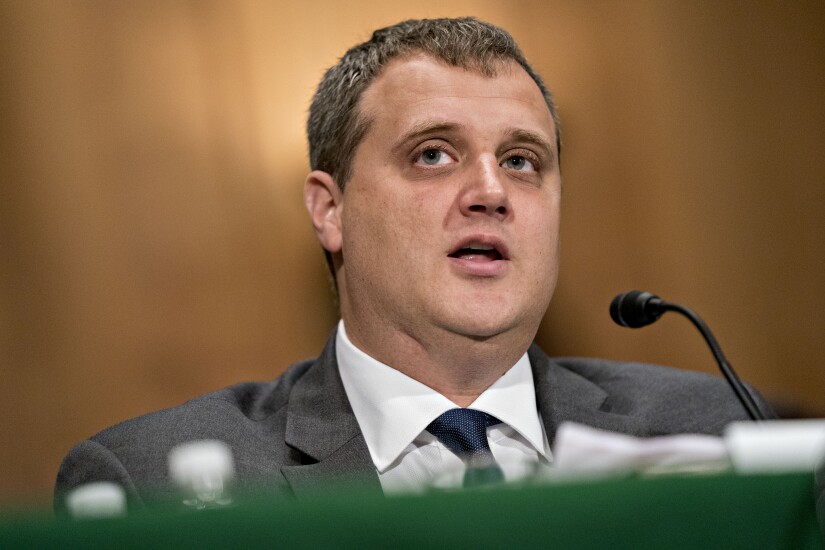He says this effort was greatly helped by enlisting, and listening to, lawmakers, so that instead of slapping the agency down when it policed the mortgage industry, they were “cheering us on.”
Bright is bringing this approach to his new role as head of the Structured Finance Industry Group. In the past, SFIG has struggled to reconcile the divergent interests of its 350 members; the role Bright assumes on Jan. 21 has been vacant for the past six months. He sees the trade group’s most fundamental challenge to be demystifying securitization for policymakers. “There’s a lot of mystique and misinformation all around, and this is an opportunity to really solve that,” he said. This will require “more honest, two-way dialogue.”
While this may feel like a risk, “I feel it’s a risk worth taking, and it’s going to pay a lot of dividends,” he said.
Bright joined Ginnie Mae in July 2017 and his nomination as president had been pending since May 2018; his departure on Jan. 16 prolongs the permanent leadership gap at the agency. (Maren Kasper, current executive vice president of Ginnie Mae, will now serve as acting president.)
He says he’s moving to SFIG because he “got comfortable with the idea that I can do as much, if not more, of the things I care about there as much as anywhere else,” adding, “it happened to be the right time.”
Bright's move is reminiscent of David Stevens' resignation as Federal Housing Administration commissioner and assistant HUD secretary to become the
Bright's salary as executive vice president of Ginnie Mae was $170,000 in 2017,
What follows is a transcript of a telephone interview, edited for length.

Why leave Ginnie Mae?
I kind of bumped into [the job] through some people I know who have relationships with SFIG. The first interview was with a whole bunch of people I respect; the idea of working together in a more official role was exciting. As the conversation went on, I got comfortable with the idea that I can do as much, if not more, of the things I care about there as anywhere else.
What was your biggest accomplishment at Ginnie Mae?
A lot of times [regulators] think they’re going to police the industry and Congress is going to slap them down. We got ahead of things and Congress cheered us on, especially Sen. Warren and Sen. Tillis. I hope that can continue in the future. I think as an agency head I tried very hard to have a dialogue with policymakers, I listened to their concerns, I explained our objectives. I don’t think regulators do that enough. A lot of regulators see Congress as a distraction, a noise; there needs to be more honest, two-way dialogue.
I plan take that approach to the SFIG.
What do you see as SFIG’s biggest challenge?
I really think we have two groups of people talking past each other, market participants and [policymakers], and the more sophisticated [the subject] on the market participant side, the more mysterious it is for policymakers.
Being transparent and honest may feel like a risk, but I feel it’s a risk worth taking, and it’s going to pay a lot of dividends. It will help people. We need to demystify each side. There’s a lot of mystique and misinformation all around, and this is an opportunity to really solve that.
Which areas need the most transparency?
The more that policymakers and their staff understand, the better they are able to call balls and strikes in an accurate and effective way. That’s the right place for regulators, legislators and the industry to be, when everyone understands how all of the pieces work and can have an objective, honest conversation instead of talking past each other.





